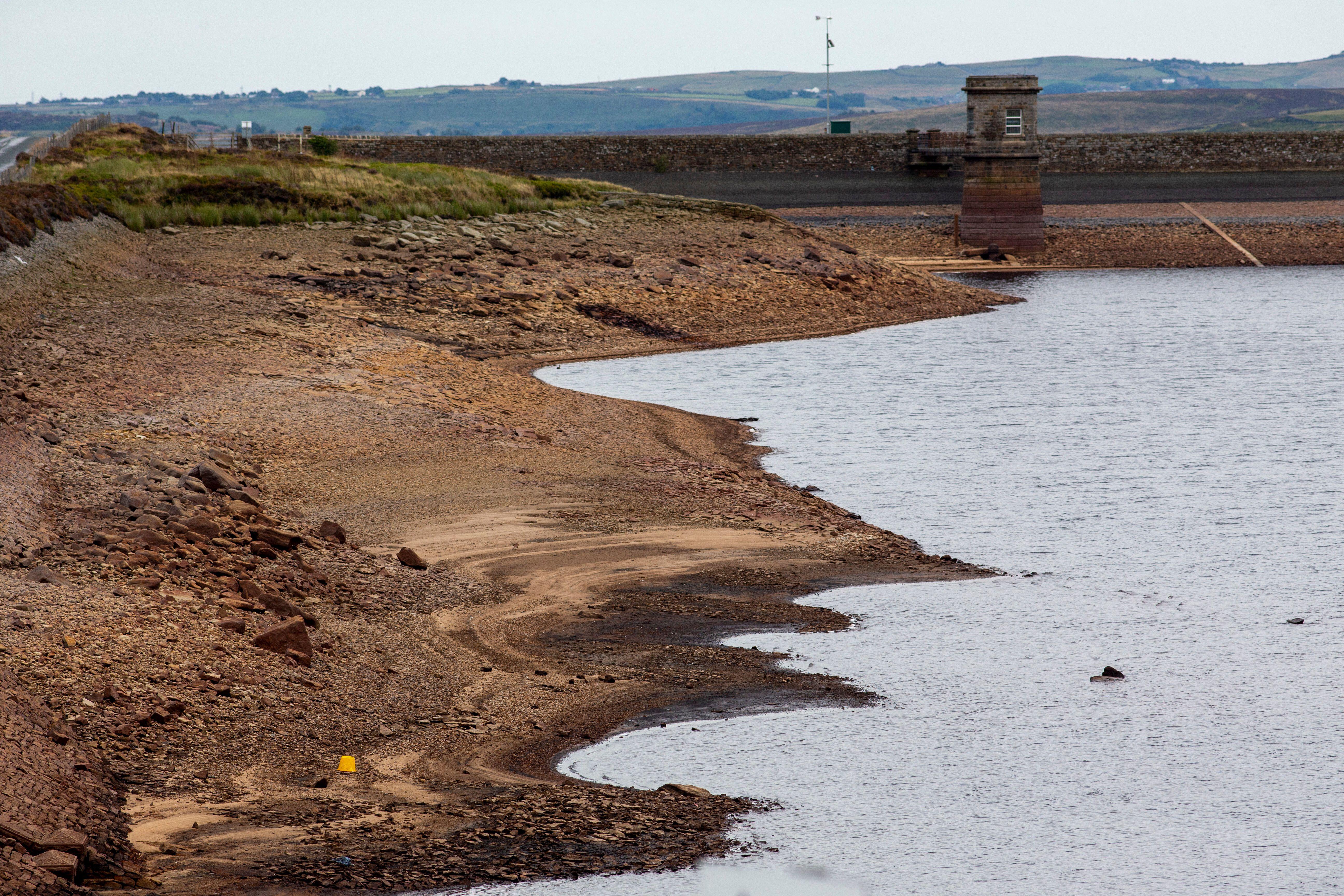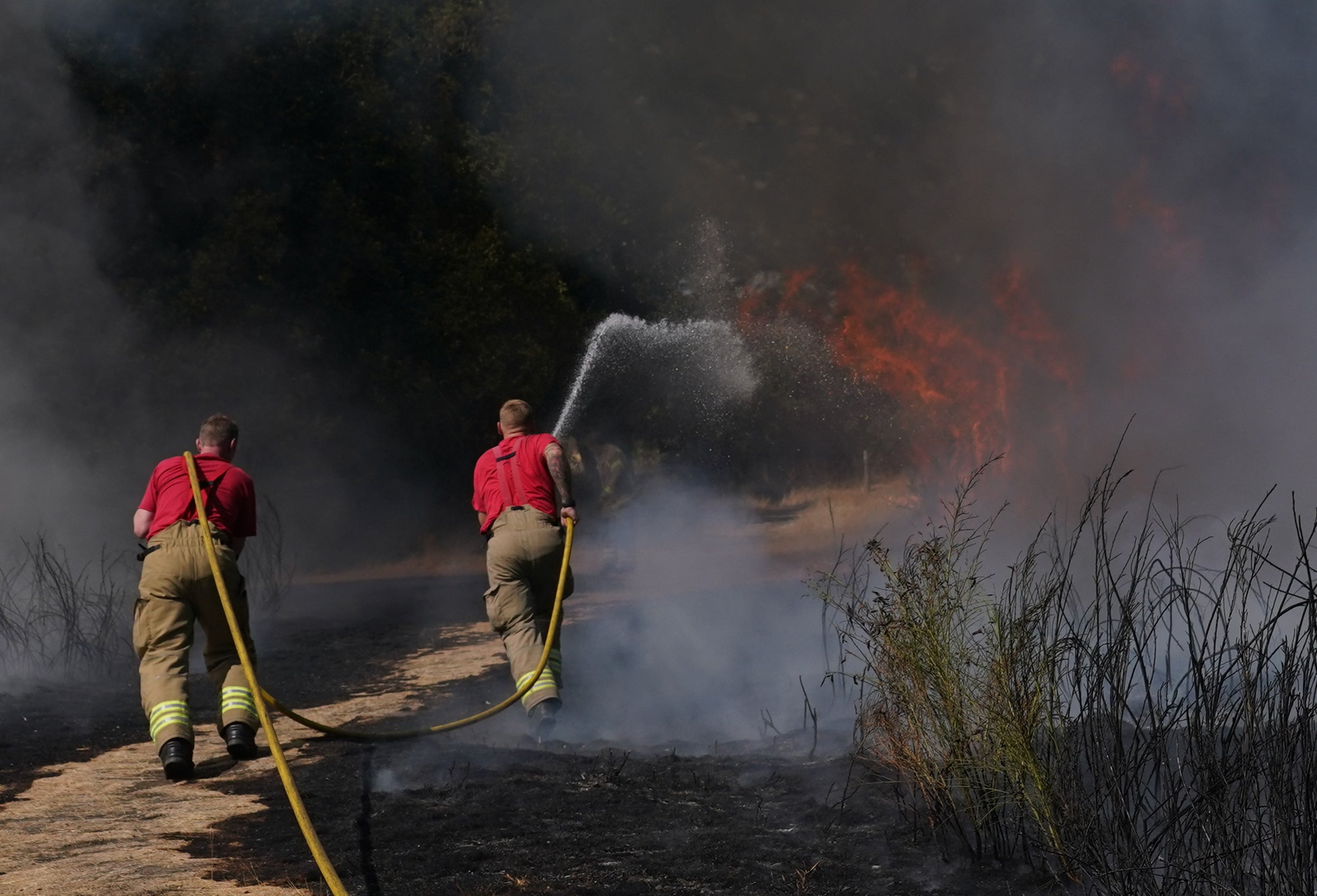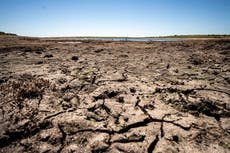Revealed: The areas using the most water in drought-hit UK
Millions across country facing hosepipe bans after weeks of unusually dry weather
A drought has been declared across a swathe of England amid the ongoing hot and dry weather, with temperatures expected to remain in the high 20s in many parts on Monday.
The government insists that essential water supplies remain secure, although a number of water companies have introduced hosepipe bans.
South West Water became the latest firm to announce a ban in Cornwall - the first such restrictions introduced there in nearly 30 years.
Water companies have in recent weeks come under fire for failing to tackle millions of litres of waste while telling people to reduce their usage.
The firms say that the places where leaks occur are often hard to reach - such as under schools and other public buildings.
Which areas of the country are using the most water?
According to analysis by experts at Utility Bidder, Thames Water, which covers Greater London and the Thames Valley, used the most amount of water per person.
The firm, which has 15 million customers, uses 7 billion litres of water per day, amounting to 467 litres per person - nearly enough to fill six average-sized bathtubs.
Northern Ireland Water was second in the top 10 areas in the UK using the most water per person.
The firm, which has 1.8 million customers, used 560 million litres per day, amounting to 311 litres per person.
Cambridge Water came third, with the firm using 83 million litres on 0.3 customers, averaging 277 per person.

Highest water usage per person
- Thames Water (Greater London and Thames Valley): 7bn litres, 15m customers, 647 litres per person (lpp)
- Northern Ireland Water (Northern Ireland): 560m litres, 1.8m, 311 lpp
- Cambridge Water (Cambridge and St Ives): 83m litres, 0.3m customers, 277 lpp
- Welsh Water (Wales: 828m litres, 3m customers, 276 lpp
- Hafren Dyfrdwy (Wrexham and Powys): 5m litres, 0.2m customers, 264 lpp
- United Utilities Water (North West England): 1.8bn litres, 7m, 257 lpp
- Affinity Water (Central England, East of England and South East England): 900m litres, 3.6m customers, 250 lpp
- Severn Trent Water (West Midlands, East Midlands and Chester): 2bn litres, 8m customers, 250 Lpp
- South East Water (South East England): 520m litres 2.2m customers, 236 lpp
- Anglian water (East of England): 1bn litres, 4.3m customers, 233 lpp
Yorkshire and the Humber is one of the areas facing a hosepipe ban in the coming weeks, and finished 16th in the study; there is a daily water supply of 1 billion litres, serving 5.7 million customers, with 175 litres of supply per person.

Affinity Water and South East Water are two of the water suppliers featured in the top 10 that cover the south east region. Together they supply 1.42bn litres of water and 356 litres per person daily, as well as serving 5.8 million customers.
Serviced by Thames Water, Greater London and Thames Valley areas have the biggest water usage in the UK: 467 litres per person. As the UK’s largest wholesale water and wastewater services provider, Thames Water has business and non-household customers, including restaurants, supermarkets, hospitals and schools.
Northern Ireland is one of the UK’s regions using the most water per person, with 311 litres used per person daily.

5 ways to save water at home:
- Open the tap less: Only open taps and faucets just enough to lightly water your hands when washing.
- Take shorter showers and reducing the frequency of baths can help save water.
- Avoid using appliances like the dishwasher and laundry machine unless you have a full load.
- Cleaning products and sprays can be more effective than a damp cloth and reduce your water consumption.
- For instantly cold water without having to run the tap, use a jug of water in the fridge.
Although the warm weather was expected to continue in many areas on Monday, rain is on the way.
Forecasters are predicting thunder, lightning and flooding as a yellow weather warning comes into force across the UK.
The Met Office has implemented the warning for Scotland and Northern Ireland until 11.59pm on Monday and 11.59pm for all of England and Wales on Tuesday after a change in air pressure led to dramatic showers.
Power cuts and delays and cancellations in trains and buses are predicted, while spray and sudden flooding could lead to difficult driving conditions for motorists.
The southwest and southeast of England also face a third day of yellow warnings on Wednesday until 11.59pm, as the rain eases off elsewhere.
Greg Dewhurst, a meteorologist at the Met Office, said the week would start off quite humid before cooling down later on.
He said: "We'll start off initially quite humid, particularly across the south and the east of the UK, with thundery showers and sunny spells, but it will gradually become cooler and fresher as the week goes on.
"First half of the week, we're looking at some heavy downpours and thunderstorms developing.
"You can sort of see that sort of transition coming in from the north, it's day by day.
"It's still hot tomorrow, we're looking at highs around 31C, possibly 32C, and then it starts to come down.
"As we head towards Tuesday, temperatures are around 26C or 27C. Wednesday Thursday will be the mid 20s.
"So probably tomorrow is the last day where we'll see temperatures above 30C for the rest of the week."
Join our commenting forum
Join thought-provoking conversations, follow other Independent readers and see their replies
Comments


Bookmark popover
Removed from bookmarks